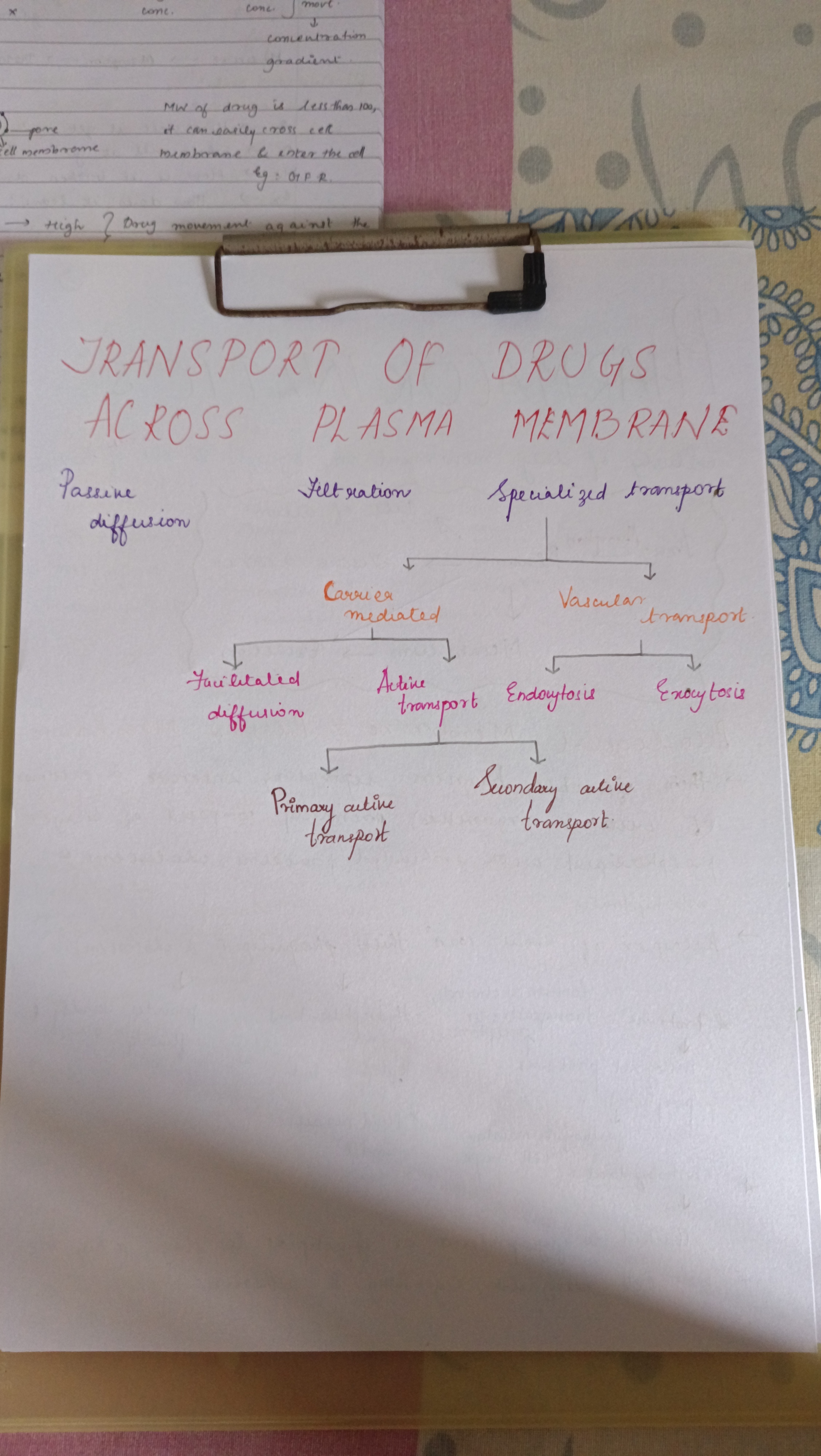Transport Mechanisms of Drugs Across Cell Membrane
Transport of Drugs Across Plasma Membrane

Overview
Drug transport across the plasma membrane is essential for effective drug delivery in the body. The process can be categorized into both passive and active mechanisms.
Mechanisms of Drug Transport
- Passive Diffusion
- Definition: Movement of drug molecules from an area of high concentration to an area of low concentration without energy usage.
- Insights: Most common method for lipid-soluble drugs. No energy is required, making it a relatively fast process.
- Filtration
- Definition: Movement through membrane pores along with water molecules.
- Insights: Depends on hydrostatic pressure or osmotic forces. Important for small, water-soluble molecules.
- Specialized Transport
- Involves other mechanisms requiring specific pathways or energy.
Specialized Transport Types
- Carrier Mediated
- Facilitated Diffusion
- Definition: Movement via specific carrier proteins without energy.
- Insights: Used for molecules that cannot diffuse freely across the membrane.
- Active Transport
- Definition: Movement against a concentration gradient, requiring energy (ATP).
- Primary Active Transport: Direct use of energy for transport.
- Secondary Active Transport: Utilizes the energy from the electrochemical gradient built by primary active transport.
- Facilitated Diffusion
- Vascular Transport
- Endocytosis
- Definition: Process of cellular uptake by engulfing particles using membrane invagination.
- Insights: Used for large molecules or particles.
- Exocytosis
- Definition: Process of vesicles fusing with the plasma membrane to release contents outside the cell.
- Insights: Common in neurotransmitter release at synaptic junctions.
- Endocytosis
Extended readings:
www.merckmanuals.com
Drug Absorption - Merck Manual Professional Edition
www.khanacademy.org
Passive transport and active transport across a cell membrane article
rwu.pressbooks.pub
Chapter 8. Membrane Transport – Introduction to Molecular and Cell ...
Image Analysis and Notes

Summary
The image does not contain any discernible content, charts, or text for note-taking. It appears to be a blank or very dark image without visible elements to analyze or extract information from.
Note
- Lack of Visible Content:
- The image provided is very dark, unstructured, and appears to contain no text or distinguishable features.
- This could be due to low lighting, an unfocused lens, or an unintentional capture.
Insights
- Image Clarity:
- Ensure adequate lighting and focus when taking photographs intended for analysis. This improves the chances of extracting useful information.
- If capturing physical notes or documents, angle and distance should be considered for better visibility.
Extended readings:
forum.image.sc
Increasing detail on dark images - Image.sc Forum
www.deasie.com
Unstructured Data Images: Harnessing Visual Information for Analysis
www2.deloitte.com
[PDF] Dark analytics - Deloitte